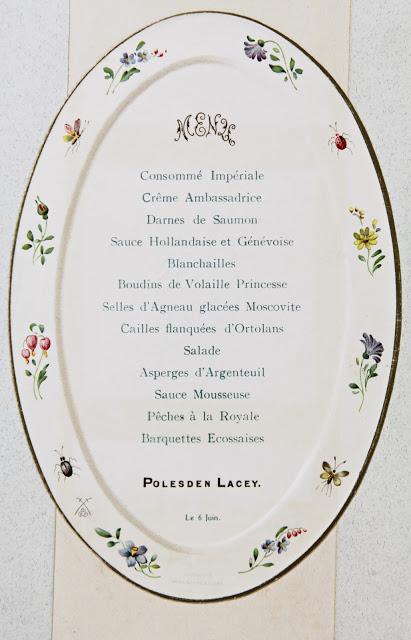
Menu for a dinner served at Polesden Lacey on 6th June 1909. The guest of honour was King Edward VII. An interpretation of this menu can be found towards the end of this posting. Photo courtesy and copyright of the National Trust.
In my last posting I described a number of museum table recreations which I have worked on in recent years. I also banged on a bit about the difficulties encountered when attempting to bring back historical settings of this nature convincingly to life, especially in films. Earlier this year I set up a table for the National Trust in the dining room at Polseden Lacey in Surrey, the former home of the Edwardian socialite Margaret Greville. Over the weekend of 5-6 June 1909 Mrs Greville hosted a house party which included King Edward VII as guest of honour. Since menus for both the Saturday and Sunday dinners have survived, the National Trust decided that it would be exciting for visitors to see a recreation of one of these meals in the actual dining room where it took place. I was invited to mastermind the project. Some items of silver and porcelain, which were almost certainly displayed on the table in 1909 have survived in the house's collection, so we had the bare bones of our royal table display.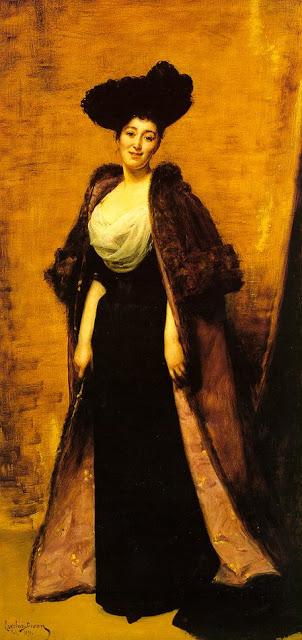
Mrs Margaret Greville. Photo courtesy and copyright of the National Trust.
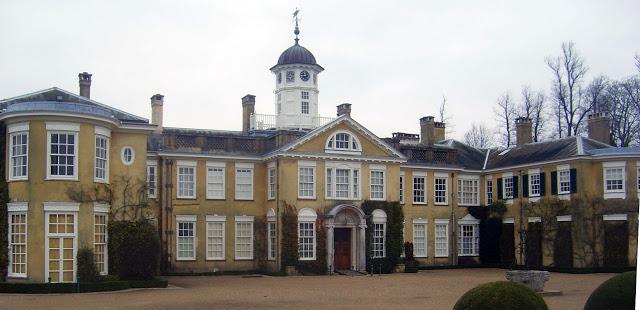
Mrs Greville's beautiful house at Polseden Lacey near Guildford
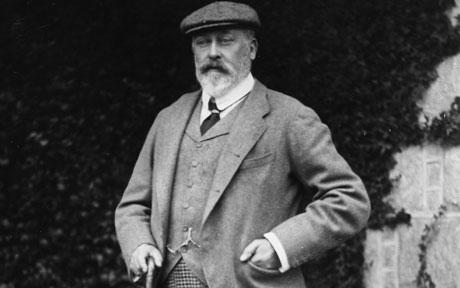
King Edward VII was fond of fine dining
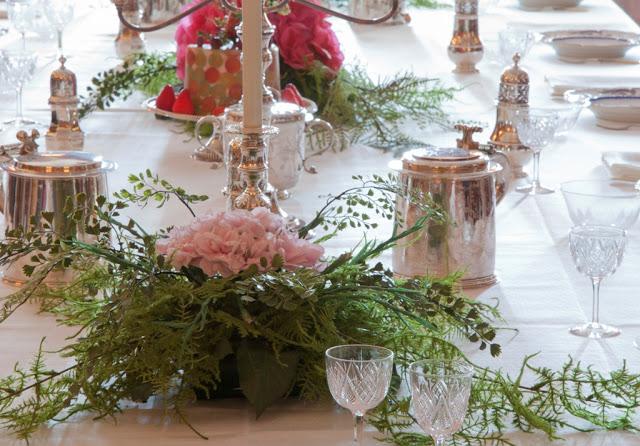
Decorated with ferns, Malmaisson carnations and roses, Mrs Greville's table is dressed with items of silver from her collection. The artificial flowers were made by Charlotte Hepworth and the chartreuses and other replica food items by Sue Hall.
However, the difficulty came when deciding which items of food we should use in our setting. Because food at this period came to the table in a succession of courses dictated by a dining protocol known as service à la russe, we could only show a particular moment in the meal. But which one? Many of the dishes were specially invented by Mrs Greville's chef Monsieur Delachaume for the occasion, but unfortunately he never recorded his recipes. In the end we decided to recreate the stage in the dinner when the sweet entremets were being served. The particular dish we focussed on was Pêches à la royale, the penultimate one listed in Mrs Greville's attractive menu. We will never know how her chef prepared his version of the dish, but a recipe for a Chartreuse de pêches à la royale was published in 1885. Of course this may have not been the actual dish that appeared on Mrs Greville's table, but it is a visually stunning entremet with the signature of the age stamped all over it. So we decided to go for it.
The dining room at Poleseden Lacey. The four corners of the tablecloth are decorated with trails of flowers and ferns
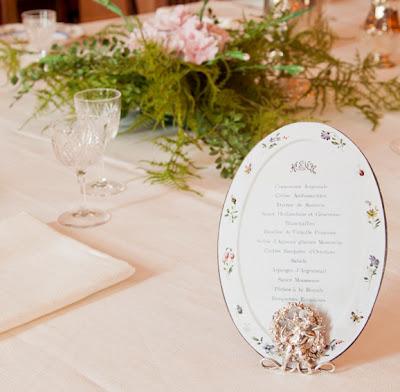
Listed in an inventory of Mrs Greville's silver are 'six chased and engraved menu holders'
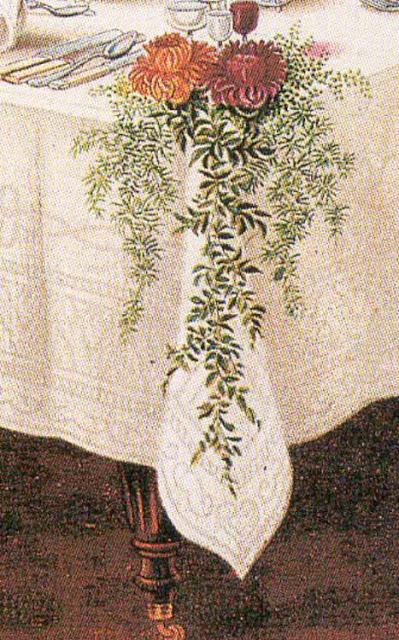
The illustration which inspired the floral ornaments on the tablecloth corners
It is often stated that the Alexander Kurakin, the Russian Ambassador to Napoleon, introduced service à la russe to fashionable Parisian dining rooms when he was resident in the city between 1808 and 1812. It slowly took over from the older service à la française where all the dishes were placed on the table at once. In England it did not become commonly used until the 1870s. It was championed here by the French chef Urbain Dubois, who was a refugee in London during the Franco-Prussian War. He also advocated a particularly British variation on the theme which he called service à l'anglaise. In this mode of service, the dishes came to the table sequentially as in à la russe, but extra dishes were laid out on the sideboard to give the guests additional choices.At a service à russe dinner, the dishes arrived from the servery in the following order.
Potages - Soups
Poissons - Fish
Entrées - formerly known in England as 'made dishes'
Relevées - Removes
Rôts - Roasts
Entremets - a medley of sweet dishes and dishes of delicately prepared vegetables
There were variations on this structure. A selection of hors d'oeuvres might be offered before the soups, a frozen punch or sorbet after the relevées and a savoury after the entremets. A dessert of fruit, confectionery, ices etc might follow. In order to give you a clearer idea of what was served to Mrs Greville's guests I have classified all of the dishes that Delachaume prepared for the dinner of 6th June 1909 below.
Potages – Soups
Consommé Impériale – Imperial Clear Soup
Naming consommés in honour of empresses, duchesses, monarchs and emperors was a common nineteenth century culinary protocol. Consommé Impériale was a beef bouillon which had a savoury custard or royale poached in it. It was usually garnished with quenelles and truffles.
Crème Ambassadrice – Ambassadorial Cream soup
As well as a clear soup it was standard practice to offer a purée soup as an alternative. I can find no recipes for this particular thick soup in any of the standard works of the period, so I assume it was an invention of the chef. Whatever its ingredients were, it would have been thickened with butter, raw egg yolks and cream. This was also served on the 5th June. Must have been popular!
Poissons - Fish
Darnes de Saumon – Thick slices of Salmon
A darne is a thick salmon steak cut from the middle of the fish. Sometimes decorated, as in the version below by Queen Victoria’s chef Charles Elme Francatelli. The New York chef Charles Ranhofer also popularized a decorative version of the dish and illustrated it in his book The Epicurian (1894). His illustration is below that of Francatelli’s.
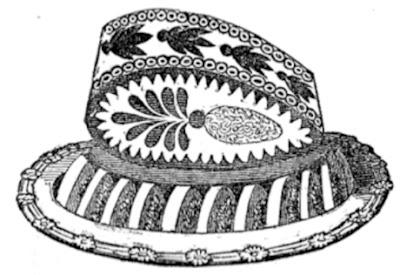
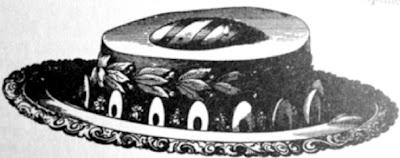
Sauce(s) Hollandaise et Génévoise – hollandaise sauce and genoise sauce.
These were for serving with the two fish dishes. Hollandaise is well known and is intended here for the salmon. More normally spelt Genoise, the second sauce was a piquant sauce flavoured with anchovy butter - intended for serving with the whitebait.
Blanchailles – whitebait.
Entreés
Boidins de Volaille Princesse – little puddings of poultry Princess style
The word boidin means pudding, but at this period they were very light poached quenneles, usually rolled into cylindrical form. The style of presentation would have been an invention of the chef.
Relevèe - Remove
Selles d’Agneau glacées Moscovite – iced saddle of lamb Moscow style.
This dish looks more like an entrée than a standard remove, which would be something like roast saddle of lamb. A Moscovite was actually a kind of ice cream usually made with gelatine and frozen without being churned. The idea of Moscow being a cold place gave the name to the dish. Frozen savoury dishes were popular at this time, though it would be foolish to call them savoury ice creams. I can find no printed recipe, so I assume it was an invention of the chef. The remove served at the dinner the day before was also a chilled meat preparation, in that instance of duckling - Cannetons Glaces Sevillane. These light iced meat dishes were better suited to summer dining than the hot heavy joints that were usually served as the remove.
Rot - Roast
Cailles flanquées d’Ortolans – Quails accompanied with ortolans
Ortolans were expensive and once highly esteemed little birds, actually a kind of bunting (Emberiza hortulana). Their consumption is now illegal. They were kept in the dark for a month, which encouraged them to gorge themselves and put on weight. They were eaten whole - heads , bones and all. Some chefs actually killed the poor little birds by drowning them in Armagnac!
Salade – Salad
This could have been any kind of salad, but prepared from fresh salad herbs grown in Mrs Greville's extensive kitchen gardens.
Entremets
Asperges d’Argenteuil – asparagus of Argenteuil
Argenteuil is a town on the outskirts of Paris, which gives its name to this old variety of asparagus with very thick (up to 2 cm) spears. It was considered by some to be the most elegant of all vegetables. Fine vegetable dishes designed to be eaten by themselves were often served at high class dinners at the same time as the sweet entremets, probably for those who did not enjoy sweets very much.
Sauce Mousseuse – Frothy Sauce
This was probably for serving with the Pêches à la Royale. It was a whipped cream flavoured with lemon and vanilla.
Pêches à la Royale – Royal Peaches
As I have mentioned the only dish I have been able to find with this name is a recipe for chartreuse of peaches à la Royale in Agnes Marshall’s Cookery Book (1885), one of the most popular of this period. Marshall died in 1905, but her books remained popular until the outbreak of the Great War. Here is her recipe and a design.
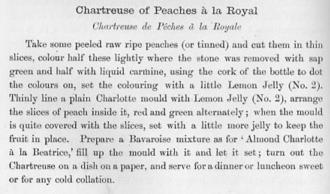
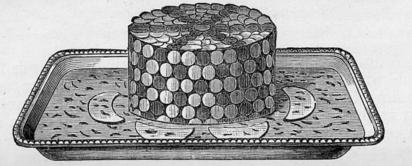
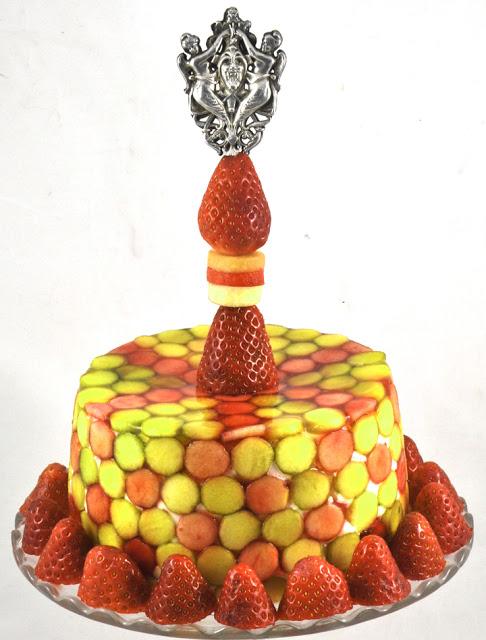
A finished chartreuse with its garniture of strawberries and hatelet skewer
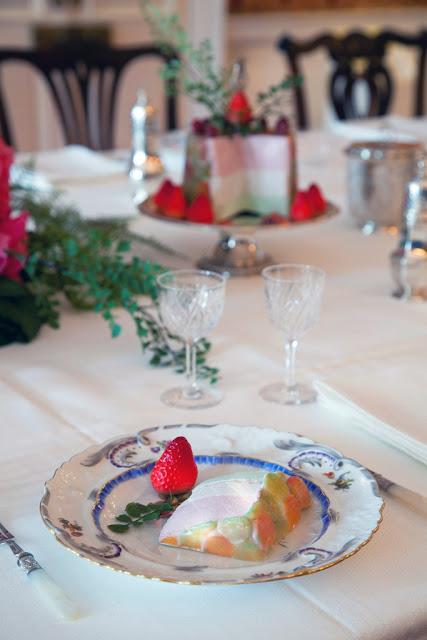
At the table, the chartreuse, with its three coloured interior is garnished with maidenhair fern
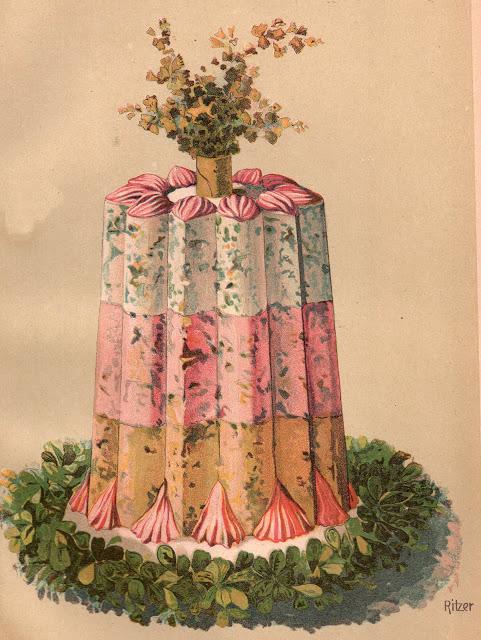
At this period it was standard practice to garnish sweet entremets such as ice creams with maidenhair fern. This chromolithigraph of a Fürst Pückler Eis appeared in Karl Scharrer, Süße Speisen und Eis (Nordhausen: 1906).
Savoury or Entremet?
Barquettes Ecossaises – Little Scottish ‘boats’
Barquettes were little pastry cases in the shape of boats. This was probably a decorative little savoury invented by the chef. With no evidence to go on our recreation is entirely speculative. Merriam Webster dictionary states that barquettes first appeared around about 1949, which is clearly wrong.
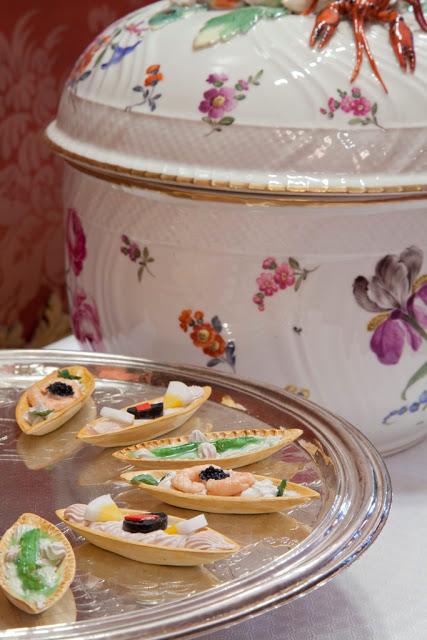
Sue Hall of Museum Cast's replica Barquettes Ecossaises
Unfortunately the kitchen and its ancillary offices is no longer extant at Polseden Lacey, so here are some wonderful archive photographs of what the kitchen looked like in the early twentieth century.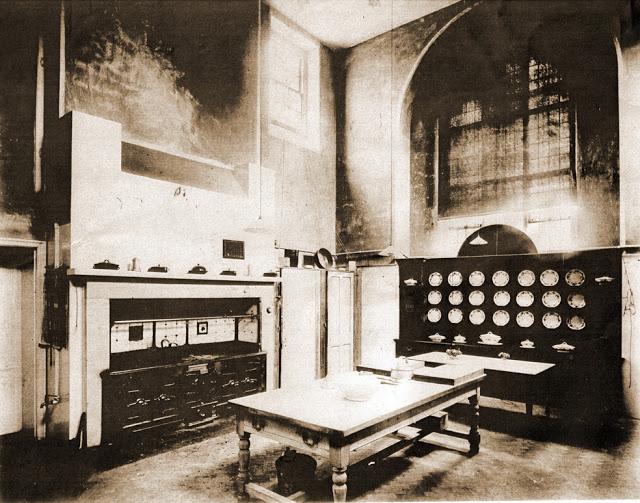
The kitchen at Polseden Lacey probably in the opening years of the twentieth century. Photo courtesy and copyright of the National Trust.
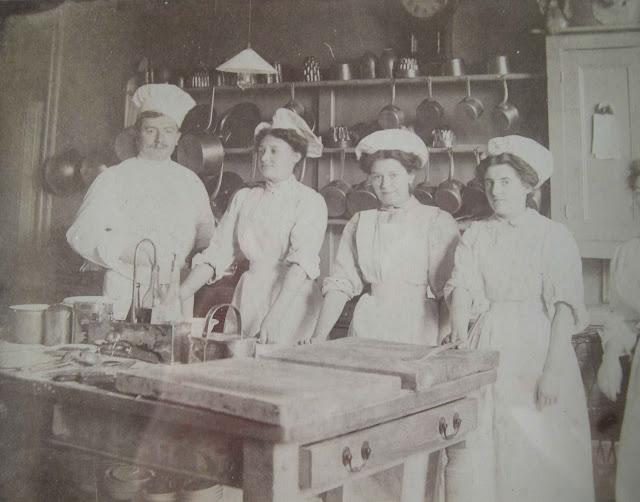
Monsieur Delachaume and his staff c.1905. Note the two charlotte moulds on the far right of the top shelf, perfect for creating a brace of chartreuses! Photo courtesy and copyright of the National Trust.
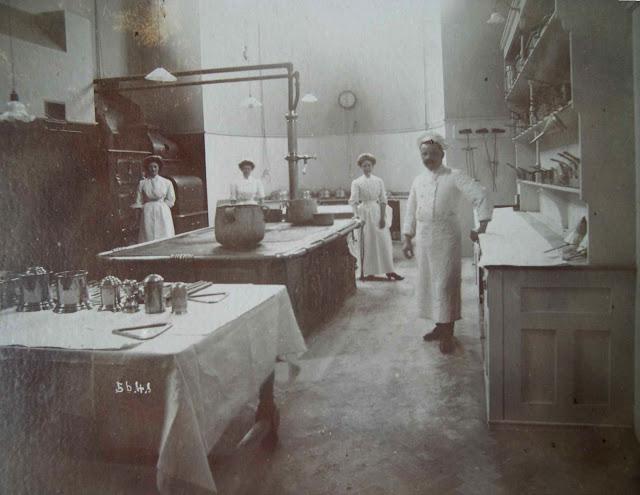
Delachaume and his ladies again, but in a much modified slightly later incarnation of the Polseden Lacey kitchen c.1905. Note the large brand new central range. The nearest table, which is neatly covered with cloth is dressed with the chef's seasoning boxes. Photo courtesy and copyright of the National Trust.
The Polesden Lacey website
